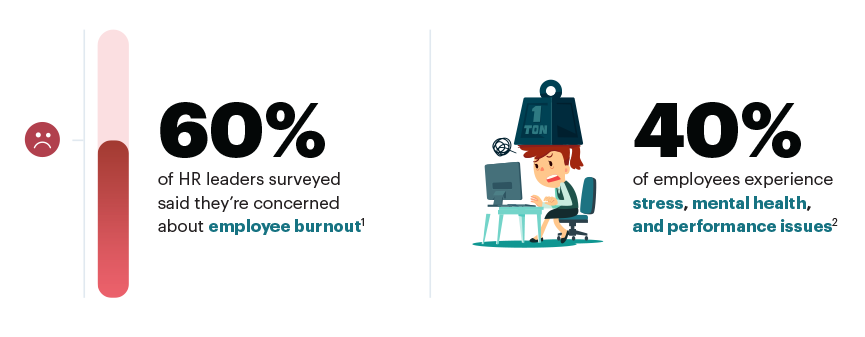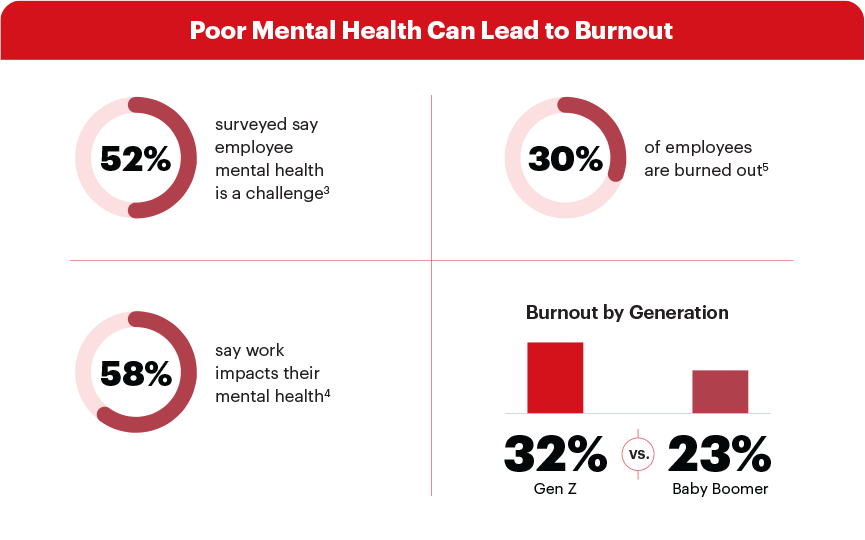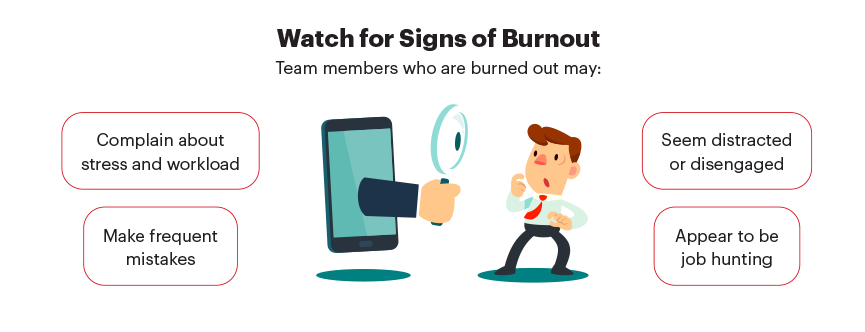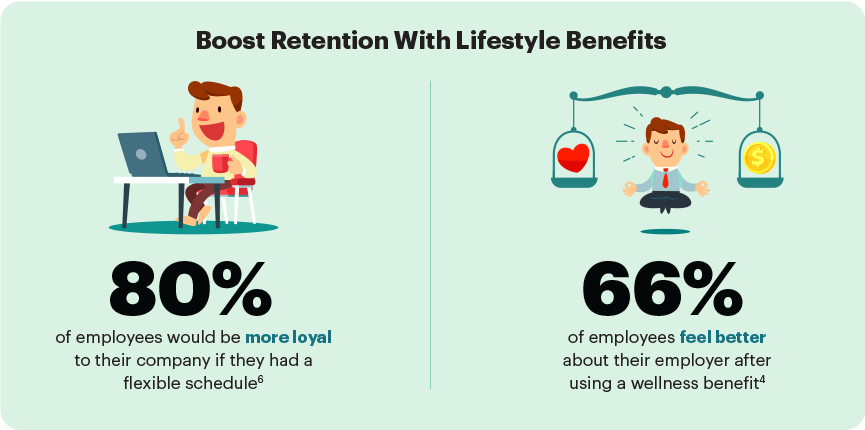What Is Employee Burnout?
Employee burnout — also called workplace burnout or job burnout — is exhaustion from ongoing stress that often leads to disengagement and poor performance. Burned-out employees tend to feel overwhelmed and unable to meet job demands.
A recent Paychex survey found 60% of HR leaders are worried about burnout,1 and 40% of employees report stress, mental health, and performance issues.2 Recognizing early signs can help prevent burnout and protect your business.

Causes of Employee Burnout
Employees can experience job burnout for many reasons, often tied to rising work pressures and an “always-on” digital culture where people feel pressure to be constantly available. Difficulty unplugging from work emails and messages outside normal hours can increase stress and decrease productivity.
While some stress is normal, extreme demands or a combination of stressors can lead to workplace burnout. Common causes include:
- Heavy workloads and an always available culture
- Unfair treatment or unclear expectations
- Lack of communication or feedback
- Tight deadlines and time pressure
- New technology without proper training
- Workplace instability or job uncertainty
- Poor work-life balance
- Interpersonal conflicts or work philosophy differences
According to Paychex research, 52%3 of surveyed leaders say employee mental health is a challenge, and 30%4 of employees report being burned out. Burnout symptoms can lead to mental anxiety, physical exhaustion, and increased turnover.

Typical Signs of Job Burnout
Recognizing signs of burnout early can help you assess stress levels and prevent bigger workplace issues. Monitoring changes in employee behavior, reviewing trends, and using satisfaction surveys or direct feedback can reveal growing burnout risks.
Common symptoms of burnout include:
- Complaints about stress, workload, or feeling overwhelmed
- Unexplained absences or frequent reports of stress-related ailments (headaches, stomachaches)
- Managers expressing concern about unmanageable workloads
- More frequent mistakes, accidents, or productivity errors
- Signs employees may be job hunting, such as disengagement or distraction
Spotting these warning signs early can help you take action to prevent burnout and protect your team’s wellbeing.

Strategies to Prevent (and Fix) Burnout
The best way to address employee burnout is to prevent it before it starts. If preventative efforts aren’t enough or external stressors are unavoidable, it’s critical to recognize the signs early and act. By proactively improving the workplace environment, employers can support better work-life balance and keep employees engaged.
Burnout prevention strategies should be flexible and tailored to individual needs. Some approaches may work better than others but acting on these signs is essential to help employees manage stress before it leads to burnout.
Here are some proven steps to help prevent burnout:
Recognize the Signs
Train managers to recognize symptoms of burnout, such as:
- Decreased enthusiasm and engagement
- Increased absenteeism
- Higher sensitivity to feedback
- Drop in productivity
- Feelings of isolation
Evaluate Workloads
Assess workloads regularly, especially for remote teams. Overworking, after-hours emailing, and lack of time off can all be early signs of burnout risk.
Adopt Flexible Scheduling
Flexible schedules can help; employees feel more loyal if offered a flexible schedule, according to Paychex research.5
Invest in Employee Engagement
Improve employee engagement by investing in recognition programs, whether it be via a bonus program, employee awards, or professional development.
Offer an Employee Assistance Program
Add an EAP to offer confidential support like mental health counseling, financial guidance, and lifestyle coaching.
Invest in Soft-Skills Training
Use a learning management system (LMS) to provide training on emotional intelligence, conflict resolution, and stress management. These are skills that can help employees navigate workplace challenges.
Set Expectations for Work-Life Balance
Encourage boundaries around after-hours work. Nearly one-third of HR leaders emphasize work-life balance as a core part of their company culture to help prevent burnout.5
Creating a workplace where employees are challenged but not overwhelmed — and have control over their workload — can reduce burnout and build a thriving, engaged team.
















